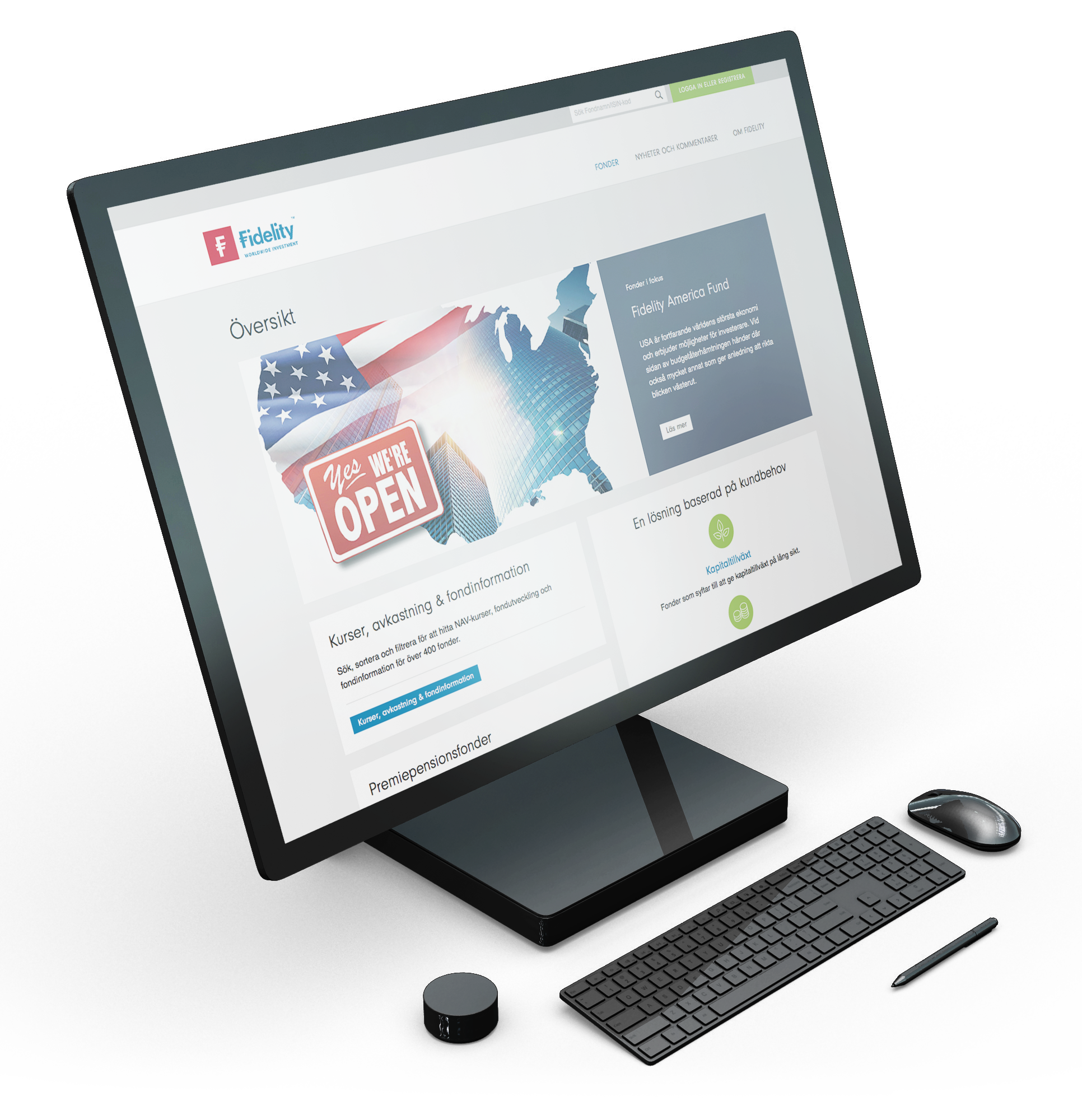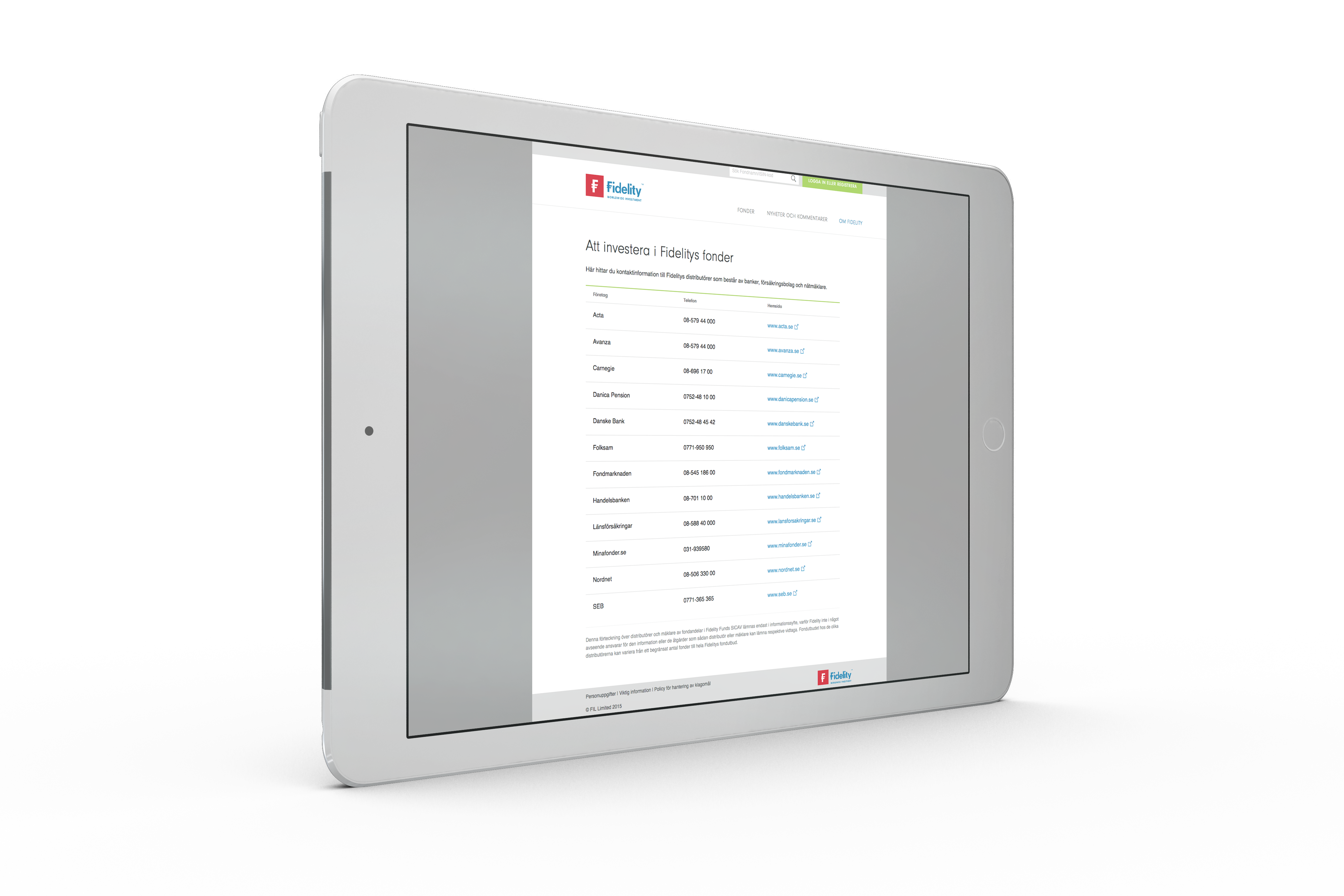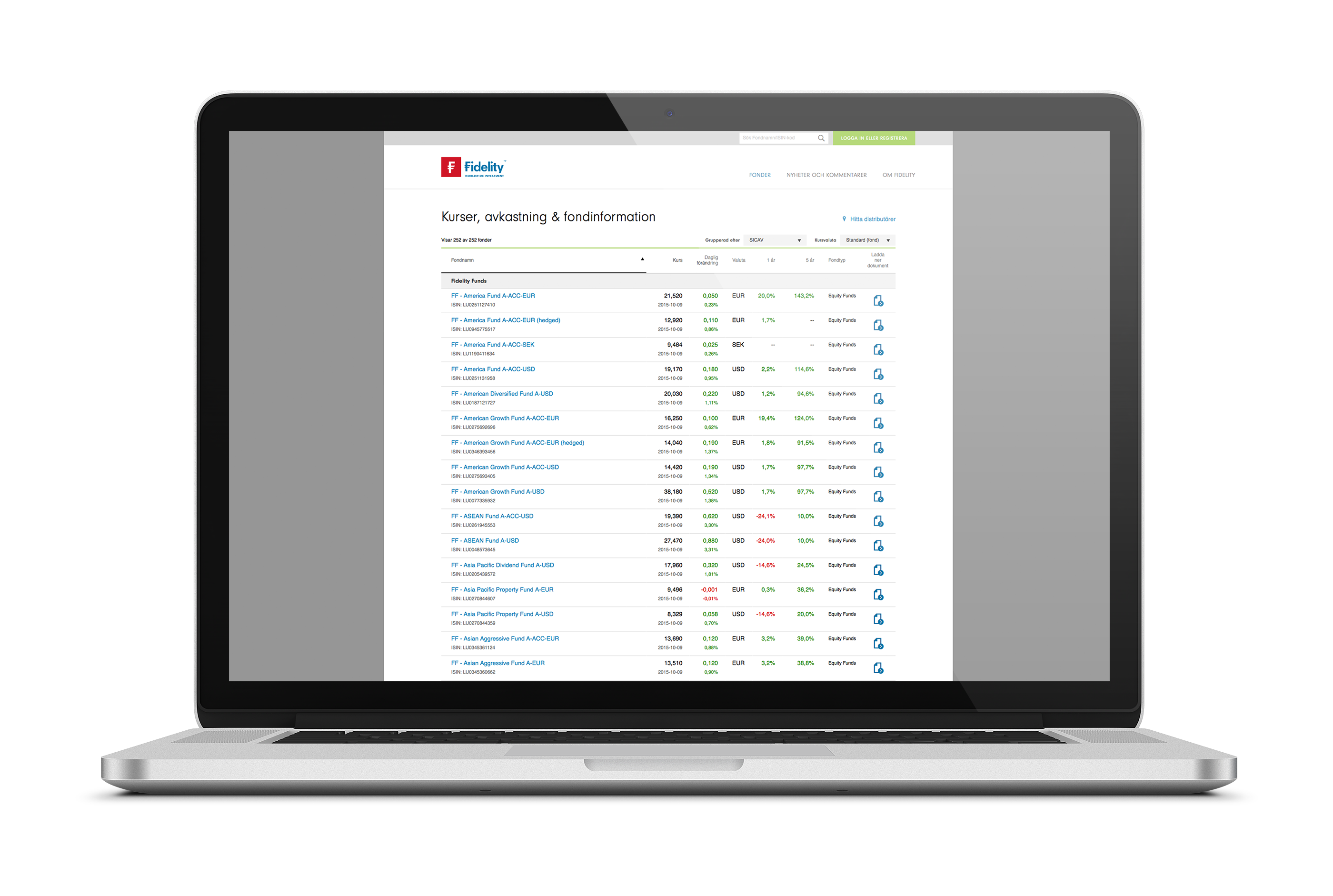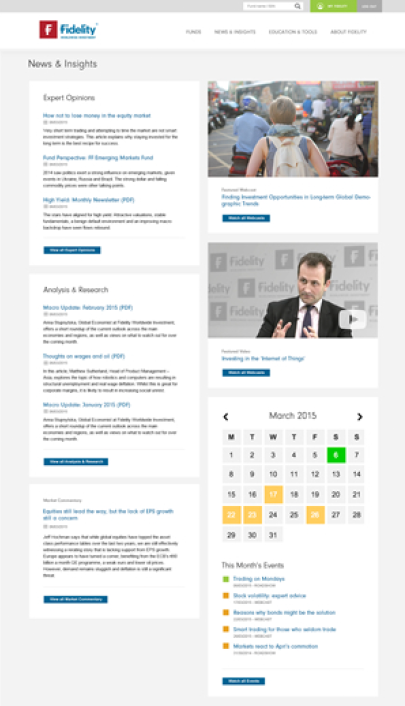Fidelity International Design Systems
I exported (and localized) my successful design system strategy from Fidelity’s US business to their European sister company.
Largely known as one of the largest privately-held US financial institutions, Fidelity has a international sister company covering the UK, Continental Europe, and Asia. Fidelity Worldwide employed a contingent of the US User Experience Design team to help develop their UX function. As part of that group, I created a design standards and governance program (based on the US version) that was embraced by the international design team leadership and leveraged as a key part of their UX function.
Overview
Problem
The international Fidelity Worldwide business is geographically fragmented – different regions operate autonomously, created a disjointed user experience and brand identity. They wanted a design framework that would serve as a common source of truth for their visual design palette, voice, and interaction playbook. Additionally, they needed a governance structure that would allow them to manage changes to this framework.
Role
I was responsible for developing the UK’s standards program, socializing its value proposition, structuring the style guide (which communicated the standards), and creating a governance process. After the UK work was complete, I set up an equivalent program in Continental Europe.
Audience
The audience for this initiative was the design organization in the central Fidelity International business, centered in London. The digital leadership team was the first set of clients, but for the program to be successful, it needed to scale in two directions:
– Designers in the UK needed to be able to use the design system
– Regions outside the UK needed to be able to use the design system and make localized modifications to them.
Constraints
The constraints for this project were primarily political. The design, technology, and business teams needed to buy-in to the program and were initially skeptical that standards could be effectively communicated that used across a large-scale development effort. The standardization structure also needed to be flexible enough to accommodate multiple localizations in European and Asians markets.
Design Process
My leadership on this project focused on:


Scalable design systems
Collaboration across multiple sites
Localization
International program management
Leadership by informal influence
I believe that programs can be developed using an approach very similar to my Design Process. Instead of beginning from scratch each time, strategists can reuse substantial amounts of existing programs to reduce start-up time and budget. Not only does this lower the intial investment cost, it also allows greater focus on the places that the new program needs to differ from the existing one.
The high-level concepts of User Experience don’t differ substantially from geography to geography – concise language and a clear visual hierarchy (for example) contribute to good user experience in the US or the UK. So I co-opted design principles from the existing US Design Sytem, socialized them with the UK design leadership, achieved buy-in from the business, and set them as a foundation for our more tactical design standards.
Speaking of those more granular standards, it turns out that an American checkbox works a lot like a British checkbox, too. About half of the design patterns for the UK were taken wholesale from the US equivalents. Importing these standards was very quick and allowed for greater focus on the more tactical patterns that did need to be redesigned for the international market. Once these standards were well on their way, I began a similar process with the Continental Europe region, appropriating principles and patterns from the UK when it made sense and making localized updates when it didn’t.
These standards were published as peers style guides. Common standards were articulated as “Worldwide,” to be used across all regions. Those that were not common were housed in individual regional guides. This set a framework that scaled to all the regions in Fidelity Worldwide that were inventing in digital design and development.
Results
Not only did this work establish a program to help the individual regions design more efficiently and consistently within their geography, it also helped maintain consistency across the regions. This increased brand identity and usability, allowing individual projects to identify best practices and communicate them to other regions. Most importantly, this program created a common design language for the regions to debate, negotiate, and ultimately agree on. This helped bridge organizational boundaries and led to a reduction of conflict and unnecessary inconsistency.
Want to learn more about how these standards were recorded and communicated? Click here to dive deeper into the site that conveyed the US and European UX standards.
Results
Fidelity UX Standards Site
Working from a common standard for efficiency and consistency.
UX Design Governance
Design standards and governance for a 350 person design department…without bloodshed or tears.
SolidWorks.com Product Section
Using stunning customer visuals to promote the products that created them









